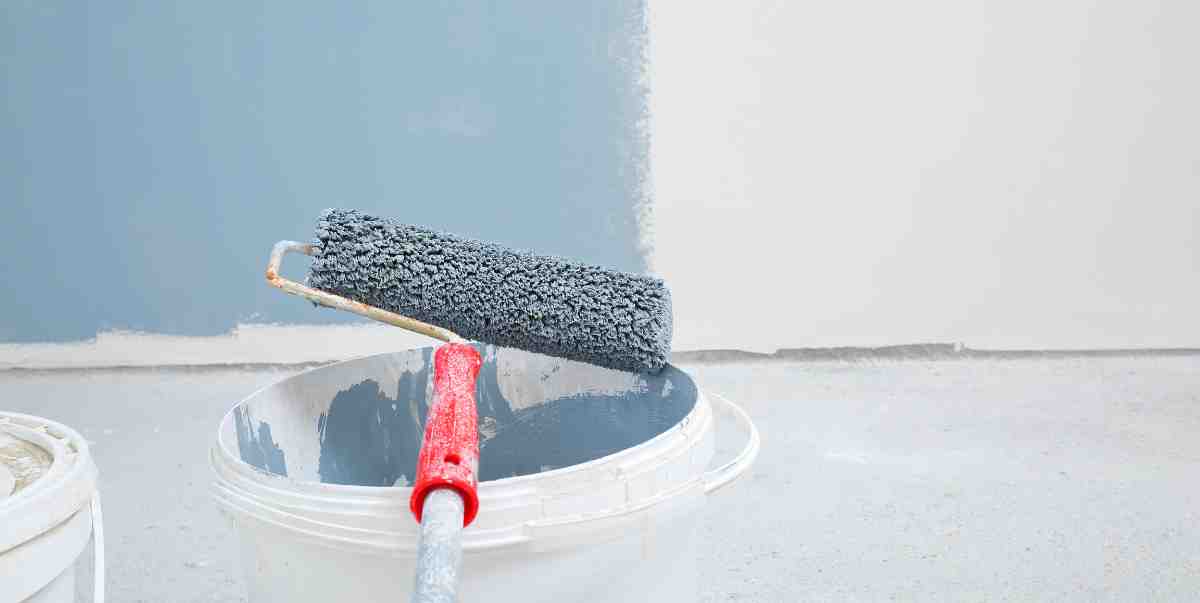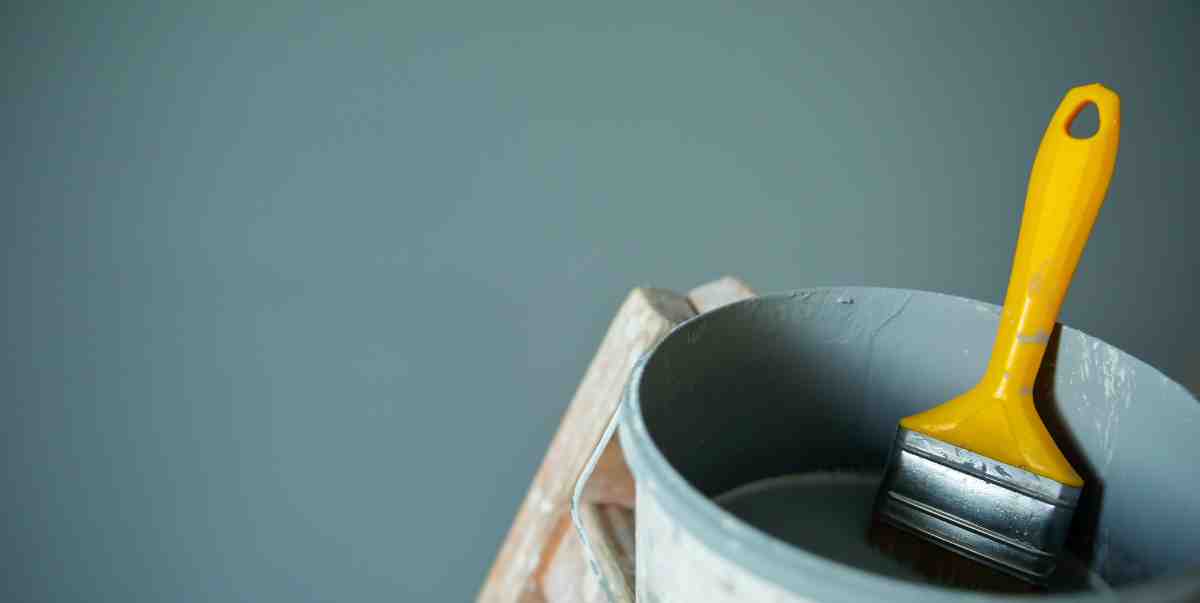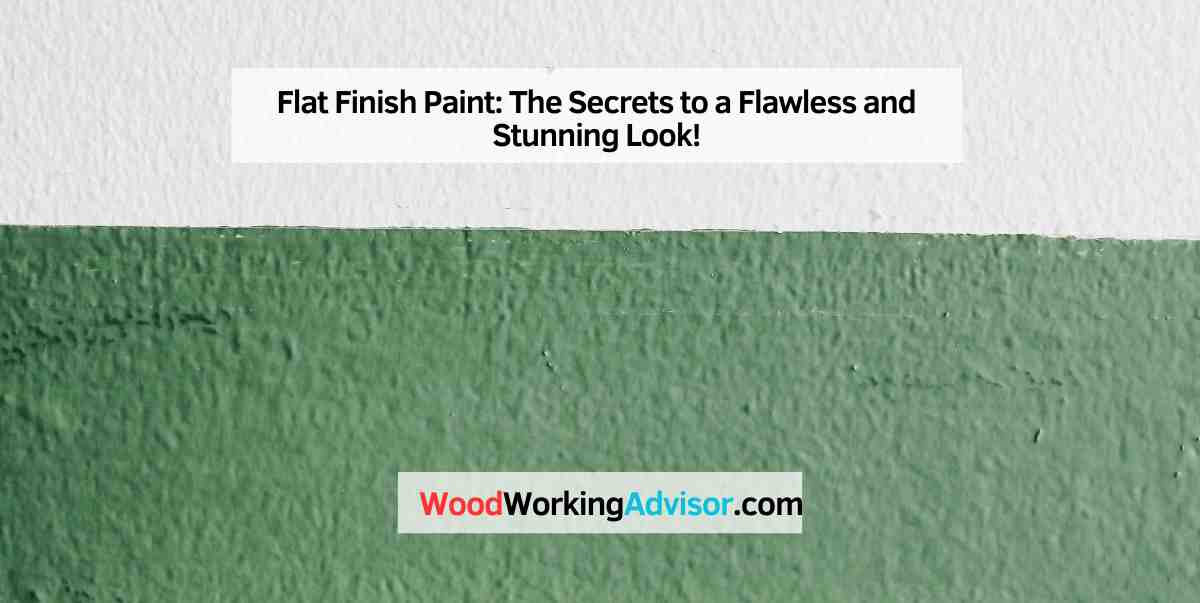Flat finish paint provides a smooth, non-reflective finish ideal for hiding imperfections on walls and ceilings. It offers a matte look, minimizing glare and creating a sophisticated aesthetic for any space.
With its velvety texture and soft appearance, flat paint is a popular choice for interior walls, especially in areas with low traffic and minimal moisture exposure. When decorating your home, flat finish paint can enhance the overall ambiance while adding a touch of elegance to your living space.
Its ability to mask surface flaws and imperfections makes it a versatile option for achieving a seamless and polished look in any room. Whether you prefer a modern or traditional style, flat finish paint can create a serene and inviting atmosphere that complements your decor choices.
Choosing The Right Paint
When it comes to selecting the perfect paint for your space, the choices can be overwhelming. Considering the surface type and the right finish are crucial in achieving desirable results.
Consider The Surface Type
Before choosing a flat finish paint, assess the surface you will be painting. Different surfaces like drywall, wood, or metal may require specific types of paint for optimal results.
Selecting The Right Finish
When it comes to selecting a finish, it’s essential to determine the level of sheen you desire. Flat finishes are ideal for hiding imperfections, while semi-gloss provides a durable and washable surface.

Preparation And Priming
Before applying flat finish paint, proper preparation and priming are crucial steps to ensure a smooth and lasting finish.
Surface Preparation
- Clean the surface from dust and debris.
- Repair any cracks or holes with spackling paste.
- Sand the surface to create a smooth base for paint.
Importance Of Primer
- Primer helps in creating a uniform surface for paint.
- Improves paint adhesion and durability.
- Seals porous surfaces to prevent uneven absorption of paint.
By following proper preparation and priming techniques, you can ensure a professional-looking finish with flat paint.
Application Techniques
When it comes to achieving a professional and flawless finish, the application technique for using flat finish paint is crucial. Whether you prefer brushing and rolling or spraying, the right application technique can make all the difference in the final result. Let’s explore the best practices for applying flat finish paint to achieve a smooth and even finish.
Brushing And Rolling
Brushing and rolling are traditional methods of applying flat finish paint and can be highly effective when done correctly.
- Use a high-quality flat paint brush for precise cutting in and edges.
- Ensure the paint is evenly distributed on the roller for a consistent application.
- Apply even pressure and maintain a steady pace to avoid streaks or uneven coverage.
- Overlap each stroke slightly to blend the paint and avoid visible lines or marks.
Spraying For Smooth Finish
Spraying flat finish paint can provide a smooth and flawless finish when executed with care.
- Adjust the spray nozzle to achieve the desired spray pattern and coverage.
- Work in a well-ventilated area and use appropriate protective gear when spraying paint.
- Maintain a consistent distance from the surface to ensure uniform coverage.
- Apply multiple light coats rather than a single heavy coat for a professional finish.
Troubleshooting Common Issues
When it comes to applying flat finish paint, there can be a few common issues that you may encounter. However, with a little troubleshooting, you can easily resolve these problems and ensure a smooth and flawless finish. In this section, we will discuss two common issues that may arise when using flat finish paint: brush marks and air bubbles.
Dealing With Brush Marks
Brush marks can be quite frustrating when you’re aiming for a smooth and even finish on your walls. Luckily, there are a few simple steps you can take to minimize or even eliminate brush marks:
- Choose the right brush: opt for a high-quality, fine-bristle brush that is suitable for the type of paint you are using.
- Load the brush properly: dip the bristles about one-third of the way into the paint, and then tap off any excess on the side of the can.
- Apply the paint in smooth strokes: use long, even strokes in a single direction, working from top to bottom.
- Avoid overworking the paint: repeatedly going over already painted areas can cause brush marks to appear.
- Use a paint extender: adding a paint extender to your paint can help improve the flow and leveling of the paint, reducing brush marks.
Eliminating Air Bubbles
Air bubbles can be unsightly and can affect the smoothness of your flat finish paint. Here are a few tips to help eliminate air bubbles:
- Stir the paint properly: make sure to stir the paint thoroughly before starting to ensure any air bubbles are eliminated.
- Avoid shaking the paint can: shaking the paint vigorously can introduce air bubbles into the mixture.
- Apply the paint evenly: using a roller or brush, apply the paint evenly without pressing too hard, as this may create air bubbles.
- Let the paint dry fully before applying additional coats: allowing each coat to dry completely before applying the next can help prevent air bubbles from forming.
- Use a primer: applying a primer before painting can help create a smooth surface and minimize the appearance of air bubbles.
By following these troubleshooting tips, you can overcome common issues such as brush marks and air bubbles when using flat finish paint. Remember to take your time and be patient, as meticulous application is key to achieving a flawless finish.
Maintaining A Flat Finish
To maintain a smooth and even flat finish when using flat finish paint, it is essential to apply thin, even coats and avoid over-brushing or over-rolling. Allow proper drying time between coats and eliminate any imperfections before applying subsequent layers.
This will help achieve a flawless flat finish, enhancing the aesthetics of the painted surface.
When it comes to interior painting, flat finish is a popular choice for walls and ceilings. Its smooth, matte appearance adds a touch of elegance and sophistication to any space. However, like any other type of paint finish, flat finish requires proper maintenance to keep it looking fresh and vibrant for years to come. In this article, we will explore some simple yet effective ways to maintain a flat finish, covering topics such as cleaning and touch-ups, as well as the importance of protective coatings.
Cleaning and Touch-ups
Regular cleaning and touch-ups are essential in maintaining the beauty of your flat finish painted surfaces. However, it’s important to proceed with caution as flat finish paint is more susceptible to damage compared to other finishes. Here are some tips to help you with cleaning and touch-ups:
1. Clean gently: When cleaning flat finish painted walls or ceilings, avoid using abrasive cleaners or scrubbing vigorously. Instead, opt for mild, non-abrasive cleaning solutions and a soft cloth or sponge. Remember, a gentle touch is key to preserving the integrity of the paint.
2. Address stains promptly: Accidents happen, and stains are bound to occur. Whether it’s a splash of coffee, a smudge of dirt, or a mark from a child’s creative endeavors, it’s crucial to address stains promptly. Use a mild cleaning solution and gently blot the stain, working from the edges towards the center to prevent spreading.
3. Handle touch-ups with care: For small touch-ups, such as covering small chips or blemishes, always use the same type and color of paint that was originally applied. This ensures consistency in appearance. Remember to apply the touch-up paint in thin, even layers, allowing each layer to dry completely before adding more.
Protective Coatings
Applying protective coatings to your flat finish painted surfaces can significantly extend their lifespan and enhance durability. Here are two types of protective coatings to consider:
1. Clear topcoat: A clear topcoat acts as a protective barrier against dirt, stains, and moisture. It provides an additional layer of defense for your flat finish paint, helping to prevent wear and tear. Ensure to choose a topcoat specifically designed for flat finishes to ensure compatibility and a seamless finish.
2. Wax sealant: Wax sealants are another option for protecting your flat finish paint. They create a semi-permanent barrier that helps repel dust, dirt, and stains. Applying a thin layer of wax sealant can not only enhance the appearance of your painted surfaces but also make them easier to clean and maintain in the long run.
Remember, when applying protective coatings, always follow the manufacturer’s instructions and recommendations for the best results.
By keeping these cleaning and touch-up techniques, as well as applying protective coatings in mind, you can maintain the beauty and longevity of your flat finish painted walls and ceilings. Taking regular care of your painted surfaces will ensure that they continue to provide an elegant and stylish backdrop to your living space for years to come.

Frequently Asked Questions Of Flat Finish Paint
What Is Flat Finish Paint And When Should I Use It?
Flat finish paint is a type of paint that has a smooth, matte appearance. It is ideal for hiding imperfections on walls and ceilings. Use flat finish paint in low-traffic areas like bedrooms, living rooms, and dining rooms to achieve a soft and uniform look.
Is Flat Finish Paint Easy To Clean?
Flat finish paint is not the easiest to clean as it tends to absorb dirt and stains. To clean flat finish painted surfaces, use a gentle cleaner and a soft cloth or sponge. Avoid abrasive scrubbing or harsh chemicals that can damage the paint.
Can I Use Flat Finish Paint In High-traffic Areas Like Hallways And Kitchens?
It is not recommended to use flat finish paint in high-traffic areas as it is less durable and prone to scuffing and marking. Instead, consider using a paint finish with more sheen, such as eggshell or satin, that offers better protection and is easier to clean.
What Are The Advantages Of Using Flat Finish Paint?
There are several advantages to using flat finish paint. It can help hide imperfections on the surface, provides a smooth and uniform appearance, and reduces glare. Additionally, flat finish paint is typically more affordable compared to paints with higher sheen levels.
Conclusion
Converting your living space with flat finish paint can enhance its aesthetic appeal. The benefits of this paint type go beyond visual allure, as it also offers durability. Its ability to cover imperfections effortlessly makes it a suitable choice for both professional and DIY painters.
Embrace the elegance and functionality of flat finish paint for your home.


